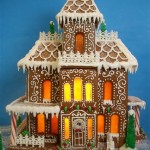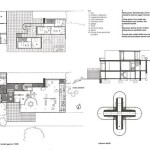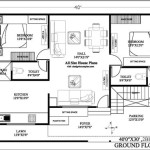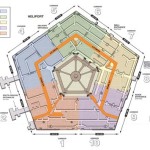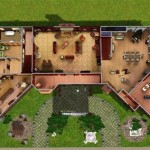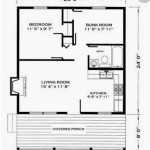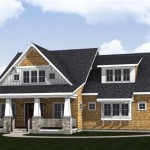Scale Model Building Plans: A Guide to Crafting Miniature Masterpieces
Scale model building is a captivating hobby that allows enthusiasts to create miniature replicas of real-world objects, from intricate aircraft and vehicles to towering buildings and landscapes. These models, carefully crafted from various materials, offer a tangible representation of the subject matter, fostering a deeper appreciation for design, engineering, and history. At the heart of this hobby lies the importance of detailed plans, which serve as the blueprint for constructing these miniature masterpieces.
Scale model building plans provide a comprehensive roadmap, guiding modelers through every stage of the building process. These plans typically include detailed drawings, specifications, and instructions, ensuring that the finished model accurately reflects the original object. While some modelers prefer to embark on their projects using their own designs, utilizing plans offers a structured approach, ensuring that the final product meets the desired standards of accuracy and detail.
Understanding Scale Model Building Plans
Scale model building plans are designed to cater to different levels of experience, from beginners to seasoned modelers. The complexity of the plan varies depending on the intricacy of the model, the type of material used, and the manufacturer's target audience. Regardless of the complexity, all plans share common elements, ensuring clarity and comprehensibility.
A typical scale model building plan comprises the following components:
- Scale: The scale indicates the ratio between the model and the original object. Common scales include 1:24, 1:32, and 1:48, denoting that one unit of measurement on the model corresponds to 24, 32, or 48 units on the real object.
- Drawings: Detailed line drawings provide a visual representation of the model's components, showcasing their dimensions, shape, and orientation. These drawings serve as the foundation for cutting, shaping, and assembling the model.
- Parts List: This list specifies the necessary components, including materials, hardware, and accessories. Modelers can use this list to gather the required materials and ensure they have everything needed before starting the project.
- Instructions: Step-by-step instructions guide modelers through the assembly process, outlining the order of operations and providing essential tips and techniques. These instructions are crucial for achieving a high-quality and accurate final product.
- Optional Features: Some plans may include optional features, such as different paint schemes, accessories, or modifications, allowing modelers to personalize their creations.
Choosing the Right Scale Model Building Plans
With a vast array of available plans, choosing the right ones for your project is essential. Consider the following factors when selecting plans:
- Skill Level: Beginners should start with simpler plans featuring fewer parts and detailed instructions. As skills develop, modelers can progress to more challenging plans with intricate details.
- Subject Matter: Select plans that align with your interests and areas of expertise. Whether it's aviation, automotive, or architecture, choose subjects that resonate with your passion.
- Scale: The chosen scale should match your available space and resources. Smaller scales may require more precision, while larger scales offer more room for detail and customization.
- Material: Consider the preferred material for your project, whether it's plastic, wood, paper, or metal. Choose plans that specify the appropriate material for the intended build.
- Manufacturer: Reputable manufacturers like Revell, Tamiya, and Hasegawa offer high-quality plans with detailed instructions and accurate representations.
Types of Scale Model Building Plans
Scale model building plans are available in diverse formats, catering to various preferences and needs. Some common types include:
- Paper Plans: Traditionally printed on paper, these plans offer a classic approach to model building. Modelers can use these plans as templates for cutting, shaping, and assembling the model.
- Digital Plans: Available in downloadable formats like PDF, digital plans offer convenience and flexibility. Modelers can print these plans or view them on a digital device, making them readily accessible.
- Kit Plans: Model kits often include detailed plans, instructions, and pre-cut parts, simplifying the building process. These kits offer a streamlined experience, especially for beginners.
- 3D Printed Plans: Advancements in technology have enabled the creation of 3D printed plans, providing intricate details and precise dimensions. These plans allow for customized designs and unique models.
Scale model building plans are an invaluable resource for aspiring and experienced modelers. They provide a structured framework for crafting intricate and accurate miniature representations of real-world objects. By understanding the types of plans available, choosing the right ones for your project, and following the instructions diligently, you can embark on a fulfilling hobby that combines creativity, precision, and attention to detail.

Free Printable Ho Scale Buildings Model Homes N

Plans Only Ezra S Feed Seed Ho Scale 1 87 Building Model Railroad

Scale Model Buildings

1 72 Scale Layout Building Models House For Architecture Model Railway Com

Plans Only Huckeepuddle Junction O Scale Building Model Railroad

Building A 17 X30 N Scale Model Railroad

Free Printable Ho Scale Buildings Plans Lzk Gallery Model Railroad Z Trains

Building Foam Board Models Making House Scale Model Part 4

Plans Only Charlie S Bait Tackle Ho Scale Building Model Railroad

A Design For The East Building

